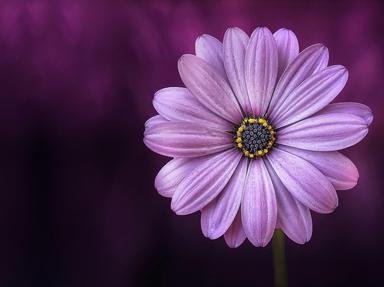Quiz Answer Key and Fun Facts
1. By what name is the "Dracula simia" known as, due to the peculiar arrangement of the column, lip and petals?
2. "Lamprocapnos spectabilis" is a pretty fuschia coloured flower native to Asia, known by names such as "Lyre Flower" and "Lady in a Bath". By what name is it more commonly known?
3. The False Bird of Paradise (Heliconia rostrata) is a plant native to many Central and South American countries. It is a host flower to many birds, especially the hummingbird. What is it also known as?
4. Ginger belongs to the genus 'Zingiber' of which there are over 150 different species. By which name is "Zingiber spectabile" more commonly known?
5. "Couroupita guianensis", native to Central and South America, is named for its fruit rather than its flower. The fruit is popular with rodents and pigs alike. What is it commonly known as?
6. "Ophrys apifera" is yet another orchid that mimics nature. Essentially self pollinating, its appearance and particular scent it exudes attracts the male of the species for which it is named, and is pollinated when the male tries to copulate with it. What is it called?
7. Referred to as a tulip orchid or boat orchid, "Anguloa uniflora" is also known as what, due to the individual appearance of each flower?
8. "Caleana major" is one of a number of species of the genus "Caleana". It is named for exactly what it looks like. The look of the flower causes sawflies to pollinate the plant as they attempt to copulate with the flower. What is this flower known as?
9. The Holy Ghost Orchid (Peristeria elata) is found in Central America and South America. Its perfume smells like beer and it has a clearly defined shape in the centre of each flower. As a result, it is also known by which name?
10. "Caladenia melanema" is a pretty and rare orchid native to Western Australia. It is listed as critically endangered, partly due to grazing by kangaroos. What is this beautiful plant commonly known as?
Source: Author
kino76
This quiz was reviewed by FunTrivia editor
agony before going online.
Any errors found in FunTrivia content are routinely corrected through our feedback system.
